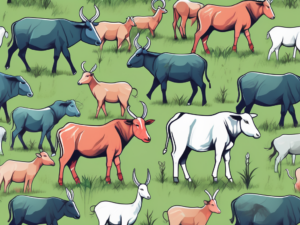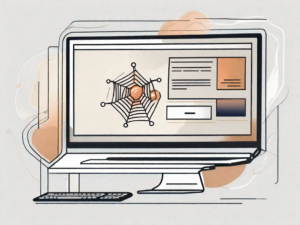I recently had a chance to talk to Dan Rubin about his upcoming participation in Web Directions USA, and here are some of the highlights.Alyssa Gregory: Let’s start by talking about your upcoming presentations at Web Directions USA. Can you tell me what I can expect from each of your sessions?Dan Rubin: There’s quite a bit of overlap between the workshop and presentation, though of course the latter is much more about demonstrating a lot in a short amount of time, and the former will be much more focused on participation by the attendees. Both sessions are focused on the point where HTML5, CSS3 and visual design collide (in a good way) and how much-improved browser support is now allowing us to take full advantage of these tools, letting the rendering engines do more of the heavy lifting rather than relying on images. Recreating visual effects that used to require javascript or exporting images from a graphics editor like Photoshop is a great way to speed the loading and rendering of interface elements, while making it easier than ever to change or adapt our designs down the road.There will also be plenty about grounding ourselves and not getting carried away with new toys like CSS Transitions and Transforms, or all manner of text-shadow and box-shadow tomfoolery. Far too often, web designers get caught up in the excitement over whatever is new and feels cutting edge, while losing sight of whether the design, interaction and user experience improves or deteriorates as a result.I’m much more interested in how browsers (and technology in general) can help us do what we’re already doing, only better and easier, and I try to teach and promote that way of thinking and implementation.AG: Tell me a little more about HTML5 and CSS3. How can the everyday designer use these technologies to make their work better and be more accessible?DR: In a nutshell, HTML5 is the result of an evolutionary process, and as many before me have said, it’s far from revolutionary — and this is a good thing. If you know how to construct a document using semantic markup, you know how to write HTML5. As a designer, the new elements (section, article, audio, video and others) aren’t nearly as interesting as they might be to developers, but the important thing is that they don’t require any special knowledge to use if you already know how to write HTML. The Canvas element (not part of HTML5, but grouped with it more often than not) also brings powerful drawing and manipulation capabilities to browsers without the use of plugins.The best resource to date on HTML5 is Jeremy Keith’s fantastic book, HTML5 for Web Designers. I can’t recommend it highly enough. For an online resource, SitePoint’s HTML5 Live with John Allsopp is great way to learn from the comfort of your own couch.Much like HTML5 and previous versions of HTML, CSS3 isn’t much different than CSS2.1 — the most important thing is the browser support for many of the new properties. Folks may already be familiar with text-shadow, box-shadow, border-radius and opacity (which have been available to Webkit browsers for some time). They are definitely a big part of what CSS3 means to designers, and now have much broader browser support, in addition to designers really starting to understand that it’s just fine if sites display and behave a little differently in some browsers. We also now have multiple backgrounds (IE9 will support them!), and CSS columns and gradients have enough support to make their use worthwhile in many cases.There are also a host of new selectors that have terrific support across the current crop of browsers, including
Both sessions are focused on the point where HTML5, CSS3 and visual design collide (in a good way) and how much-improved browser support is now allowing us to take full advantage of these tools, letting the rendering engines do more of the heavy lifting rather than relying on images. Recreating visual effects that used to require javascript or exporting images from a graphics editor like Photoshop is a great way to speed the loading and rendering of interface elements, while making it easier than ever to change or adapt our designs down the road.There will also be plenty about grounding ourselves and not getting carried away with new toys like CSS Transitions and Transforms, or all manner of text-shadow and box-shadow tomfoolery. Far too often, web designers get caught up in the excitement over whatever is new and feels cutting edge, while losing sight of whether the design, interaction and user experience improves or deteriorates as a result.I’m much more interested in how browsers (and technology in general) can help us do what we’re already doing, only better and easier, and I try to teach and promote that way of thinking and implementation.AG: Tell me a little more about HTML5 and CSS3. How can the everyday designer use these technologies to make their work better and be more accessible?DR: In a nutshell, HTML5 is the result of an evolutionary process, and as many before me have said, it’s far from revolutionary — and this is a good thing. If you know how to construct a document using semantic markup, you know how to write HTML5. As a designer, the new elements (section, article, audio, video and others) aren’t nearly as interesting as they might be to developers, but the important thing is that they don’t require any special knowledge to use if you already know how to write HTML. The Canvas element (not part of HTML5, but grouped with it more often than not) also brings powerful drawing and manipulation capabilities to browsers without the use of plugins.The best resource to date on HTML5 is Jeremy Keith’s fantastic book, HTML5 for Web Designers. I can’t recommend it highly enough. For an online resource, SitePoint’s HTML5 Live with John Allsopp is great way to learn from the comfort of your own couch.Much like HTML5 and previous versions of HTML, CSS3 isn’t much different than CSS2.1 — the most important thing is the browser support for many of the new properties. Folks may already be familiar with text-shadow, box-shadow, border-radius and opacity (which have been available to Webkit browsers for some time). They are definitely a big part of what CSS3 means to designers, and now have much broader browser support, in addition to designers really starting to understand that it’s just fine if sites display and behave a little differently in some browsers. We also now have multiple backgrounds (IE9 will support them!), and CSS columns and gradients have enough support to make their use worthwhile in many cases.There are also a host of new selectors that have terrific support across the current crop of browsers, including :first-of-type, :nth-of-type(), :last-child, :empty, :selection, and :target, to name a few. These selectors, along with better support for CSS2.1 selectors, allow us to handle a lot of logic into our CSS that used to require JavaScript.Also available (and full of exciting possibilities) are Media Queries, which allow us to tailor our stylesheets to various devices (not simply targeting specific devices, but specific characteristics of those devices). Though we’ve been using Media Queries for a while now (print and iPhone-specific stylesheets, for example), they are rapidly gaining popularity and attention thanks to an amazing article by Ethan Marcotte, published over on A List Apart. This is the future of web design, and what it should have been from the very beginning.Once designers start thinking and designing with these tools in mind, our interfaces will become more responsive to the needs of users.AG: Have you been involved in previous Web Directions events? What is one of the biggest benefits of attending an event like this?DR: I was a volunteer behind the scenes for the first Web Directions North, held in Vancouver in 2007, and it was really a great experience as I was able to spend time getting to know John and Maxine better, plus the other fantastic volunteer staff, and attend many of the sessions (I even introduced Paul Hammond and George Oates for their combined presentation).Attending events like Web Directions offers an opportunity to learn from some of the best in our industry (the speakers, organizers, and often the attendees), and more importantly it provides an environment for conversations, debates, laughter and commiseration with like-minded individuals who understand what you do. The hallway time between sessions, and the random chats at after parties and over meals/drinks are as big a part of the experience of a conference as the sessions and Q&A.AG: You have a pretty impressive resume, Dan. What’s next for you?DR: I get a bit dizzy when I think about what’s “next” — for me, everything’s still to come: whatever I’ve done to get to where I am now is just practice for whatever I decide to do tomorrow.I can, however, list a few things I’d love to practice in the near future: wayfinding / environmental graphic design, type design, book design, write another book or two, self publish at least once, design and/or consult on physical product design, architectural and portrait photography, start a foundation (for a still-semi-secret Big Idea™)… I could probably go on and on :)AG: One last question: will you be doing any singing at Web Directions USA? :)DR: Will there be karaoke? I can’t resist karaoke…AG: Thanks for your time, Dan! Dan is a highly accomplished user interface designer and usability consultant, with over ten years of experience as a leader in the fields of web standards and usability, specifically focusing on the use of (X)HTML and CSS to streamline development and improve accessibility. His passion for all things creative and artistic isn’t a solely selfish endeavor either—you’ll frequently find him waxing educational about a cappella jazz and barbershop harmony, interface design, usability, web standards, typography, and graphic design in general.
We’re giving one lucky SitePoint reader the chance to win a ticket to either Web Directions South in Sydney, Australia, or Web Directions USA (you’ll need to pay any airfares or accommodation). Just take our short quiz, and you could be in the running. But you better be quick — there are only a couple of days left!Take the quiz!
Alyssa Gregory is a digital and content marketer, small business consultant, and the founder of the Small Business Bonfire — a social, educational and collaborative community for entrepreneurs.



































































































